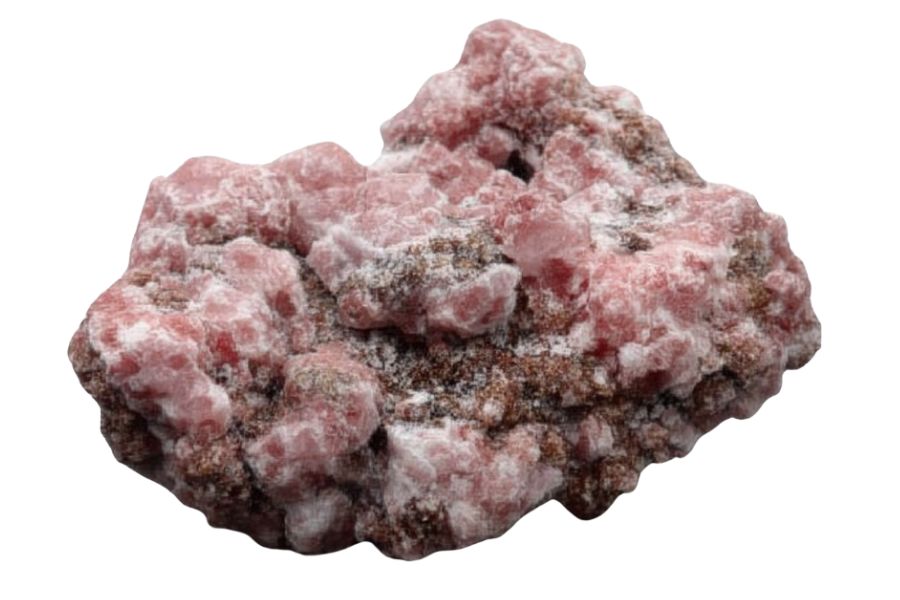Alaska has tons of garnets waiting to be found. These shiny red stones sit in rocks across the huge state. You just need to know where to look.
I’ve spent years hunting for garnets in Alaska. Some spots are easy to reach by car. Others need a boat or a small plane to get there. The hunt is part of what makes it fun.
This guide shows you spots where garnet hunters have good luck. I’ll share some tips I’ve learned the hard way. You are going to know exactly where to go to find your own red gems in Alaska’s wilderness.
How Garnet Forms Here
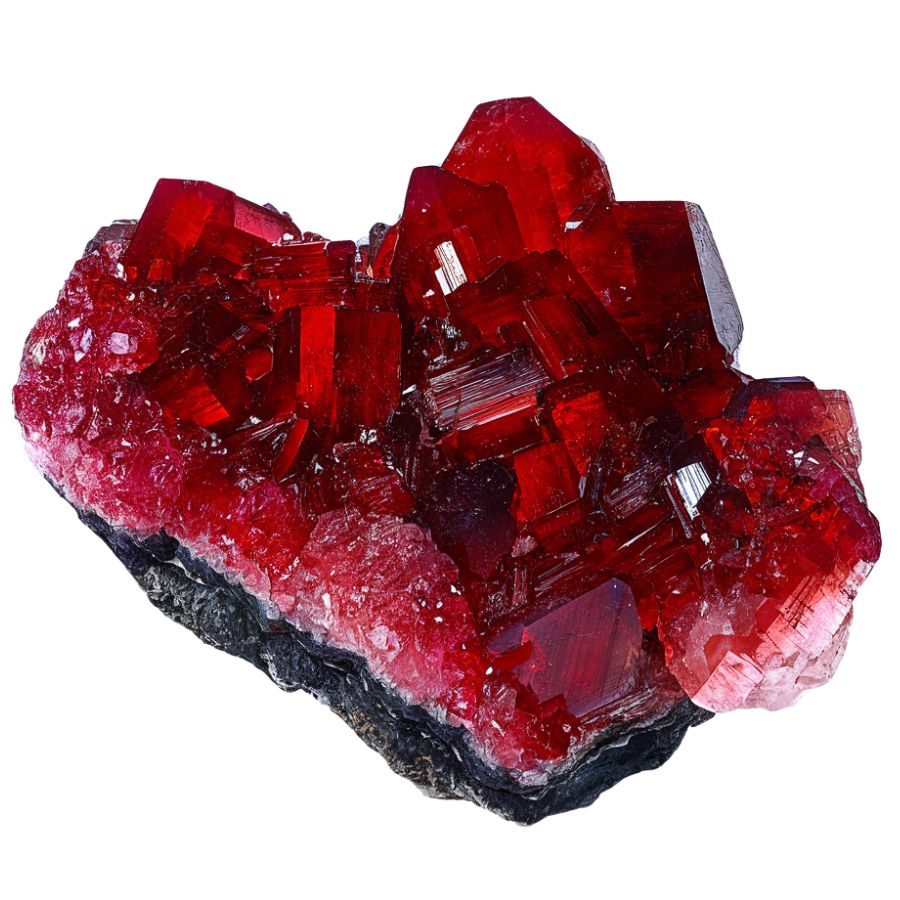
Garnet forms deep underground when rocks get squeezed and heated during metamorphism. Think of it like baking cookies – but instead of dough, you’ve got minerals like aluminum, iron, and silica getting cooked under intense pressure.
When these minerals reach temperatures around 400-700°C, they start rearranging their atoms into garnet’s distinctive crystal structure.
What’s cool is that garnets often grow by pushing other minerals out of the way! That’s why they form those perfect geometric shapes.
Most garnets need high pressure too, which is why they’re usually found in rocks that were once buried miles beneath the surface. The slower they grow, the bigger and clearer they become – some taking millions of years to reach their full size.
Types of Garnets
Garnets are captivating gemstones that showcase an impressive range of colors and varieties, each determined by their unique chemical composition. Understanding these differences helps in identifying the stone’s value.
Almandine Garnet
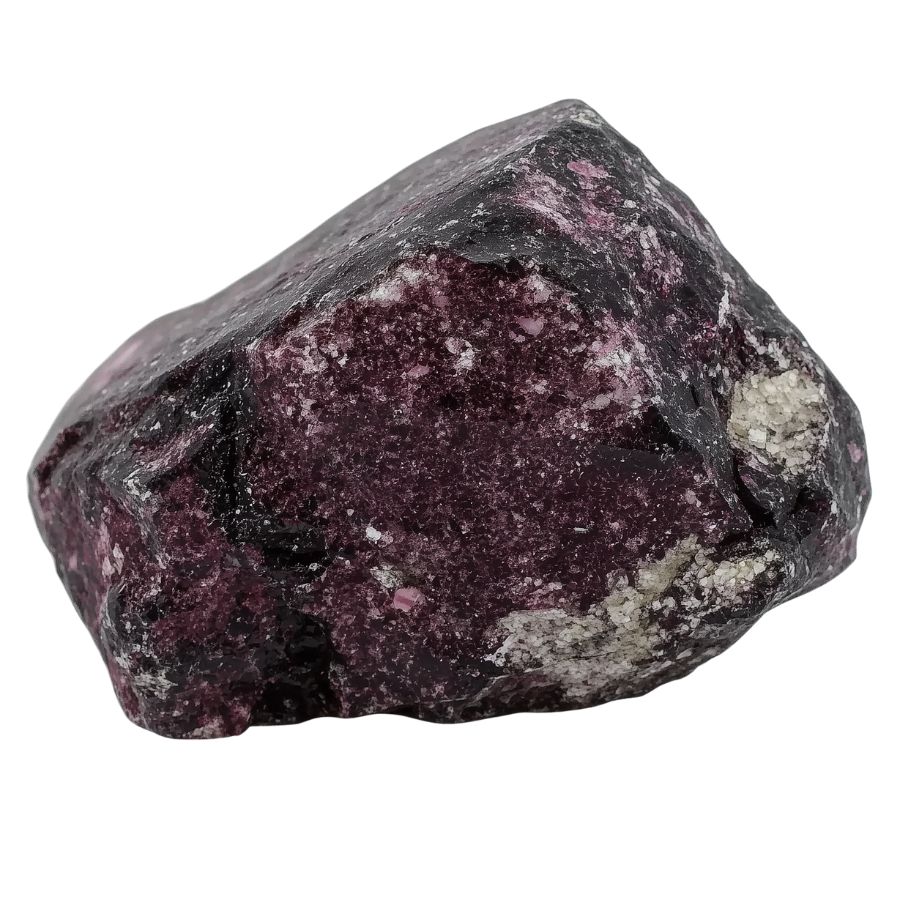
Almandine garnet stands out with its rich, deep red to reddish-brown color. The stone sometimes shows hints of orange or brown, making each piece unique. Its color intensity remains consistent throughout the stone, creating a beautiful depth that catches the eye.
The crystal structure of almandine follows a perfect cubic pattern, forming well-defined shapes with smooth faces. This symmetry contributes to its striking appearance and helps light bounce through the stone evenly.
What makes almandine special is its high iron content, which gives it a higher specific gravity than other garnets. This means it feels slightly heavier in your hand compared to similar-sized stones. Its refractive index of 1.74 to 1.83 creates excellent brilliance and fire.
Most almandine garnets are remarkably clear, though some may contain natural inclusions that create interesting patterns. These patterns can add character to the stone without affecting its overall beauty or durability.
Pyrope Garnet
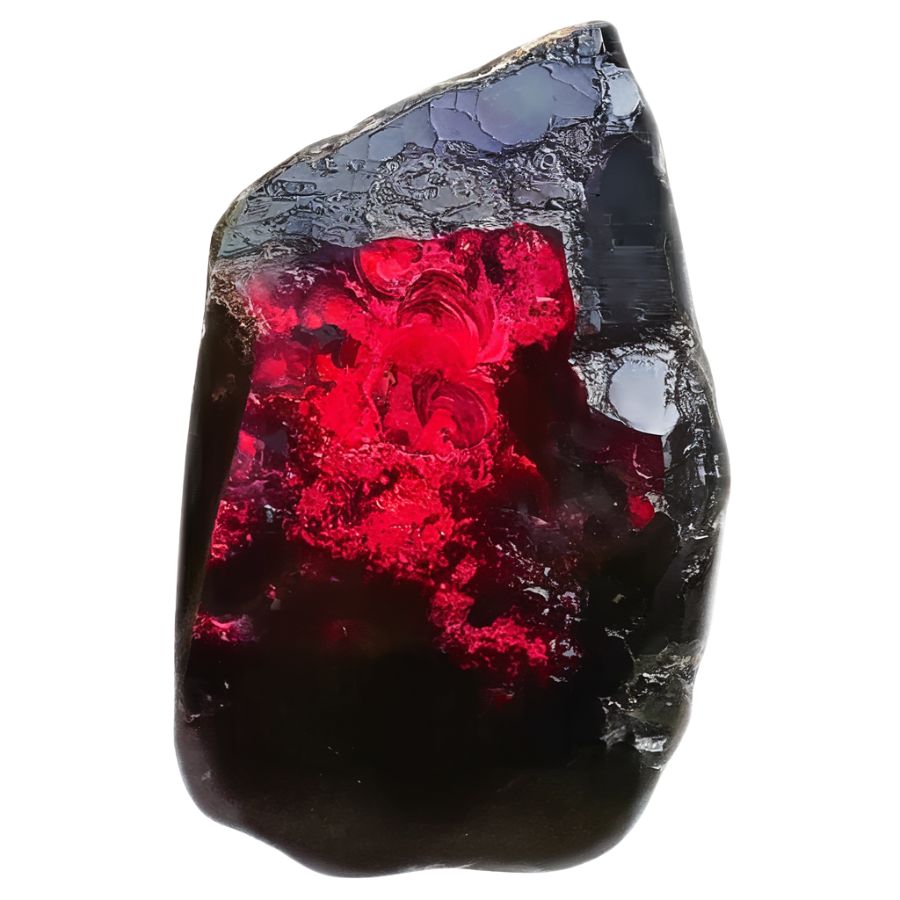
Pyrope garnet captivates with its intense red-to-purplish-red color. The color is so pure and vibrant that some specimens have earned the nickname “Cape Ruby.”
This stone has excellent clarity, rarely showing visible inclusions. When present, some inclusions can create a fascinating star effect called asterism, where a six-pointed star seems to float on the surface.
The stone appears especially vivid when cut into clean, geometric shapes that maximize light return.
Some pyropes show a subtle color shift, appearing slightly different under natural and artificial light. This subtle change adds to their charm and makes each stone unique.
Their exceptional clarity and lack of internal flaws make them particularly appealing to collectors.
Spessartine Garnet
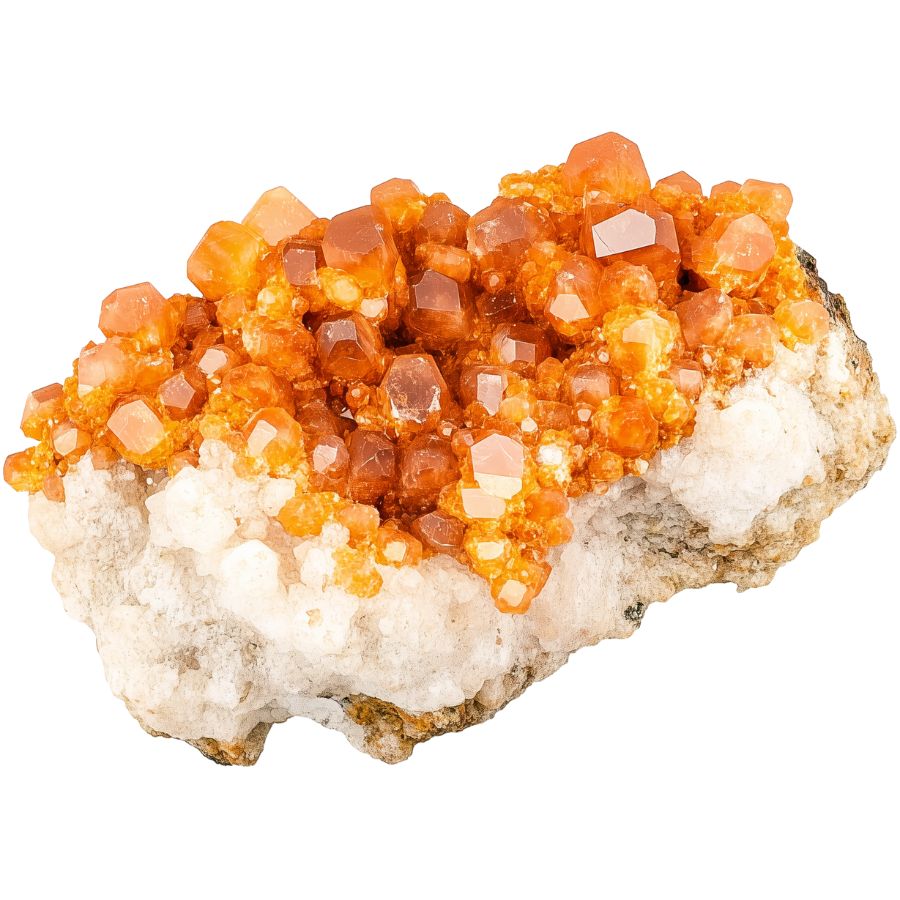
Spessartine garnet showcases a stunning range of orange colors, from bright mandarin to deep reddish-orange. The most valued pieces display a pure, vivid orange. This distinctive coloring comes from manganese in its chemical makeup.
When cut properly, spessartine exhibits bright flashes of light and exceptional sparkle. Some stones show a subtle “sugar-like” texture that creates a soft, internal glow.
Pure spessartine is rare in nature, making high-quality specimens particularly valuable. Most stones contain trace elements that create subtle color variations.
The stone’s transparency ranges from completely clear to slightly cloudy. Clear specimens are highly prized, but some collectors prefer stones with slight cloudiness that creates an interesting depth effect.
Andradite Garnet
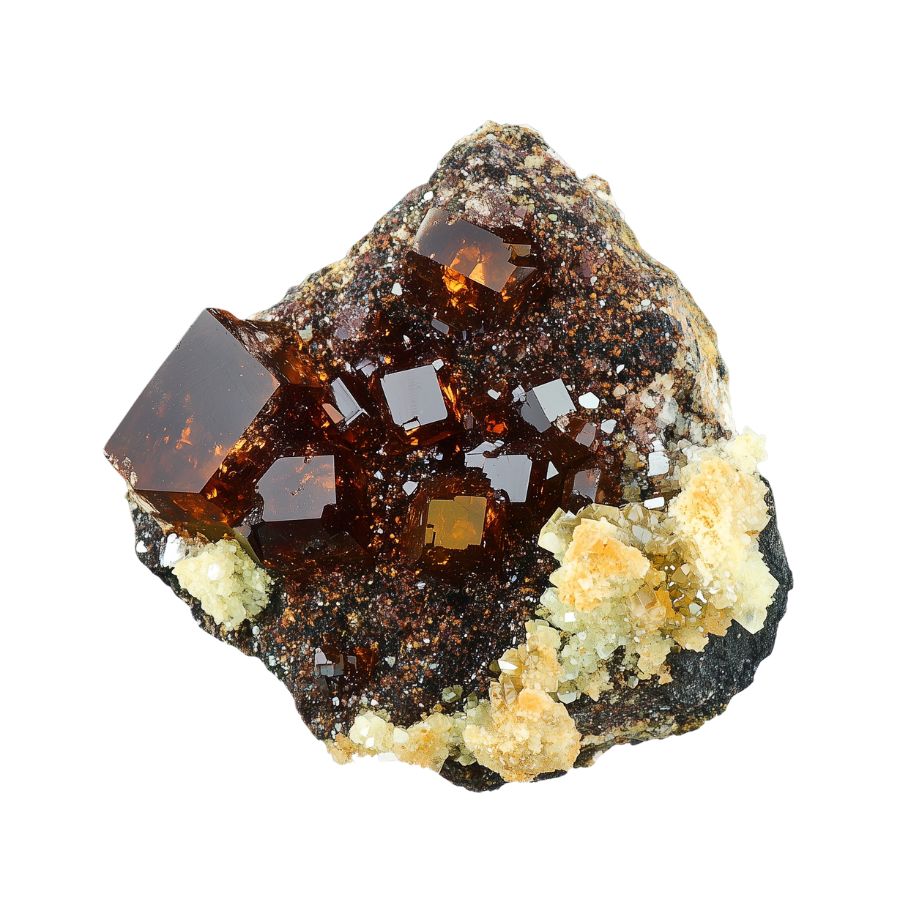
Andradite garnet displays the widest color range of all garnets. Colors span from bright green to yellow, brown, and black. The green variety, known as demantoid, is particularly treasured for its brilliant, emerald-like color and exceptional sparkle.
This stone has the highest dispersion rate of all garnets, even higher than diamond. This means it breaks light into rainbow colors more effectively, creating fascinating fire and brilliance.
Some andradite garnets contain unique internal features called “horsetail” inclusions. These fine, needle-like patterns are actually desired by collectors and add to the stone’s value.
The stone’s surface has a bright, glass-like luster that enhances its natural beauty. Some specimens exhibit unique optical features such as asterism (star-like patterns) and chatoyancy (cat’s eye effect), which further enhance their visual appeal.
Grossular Garnet
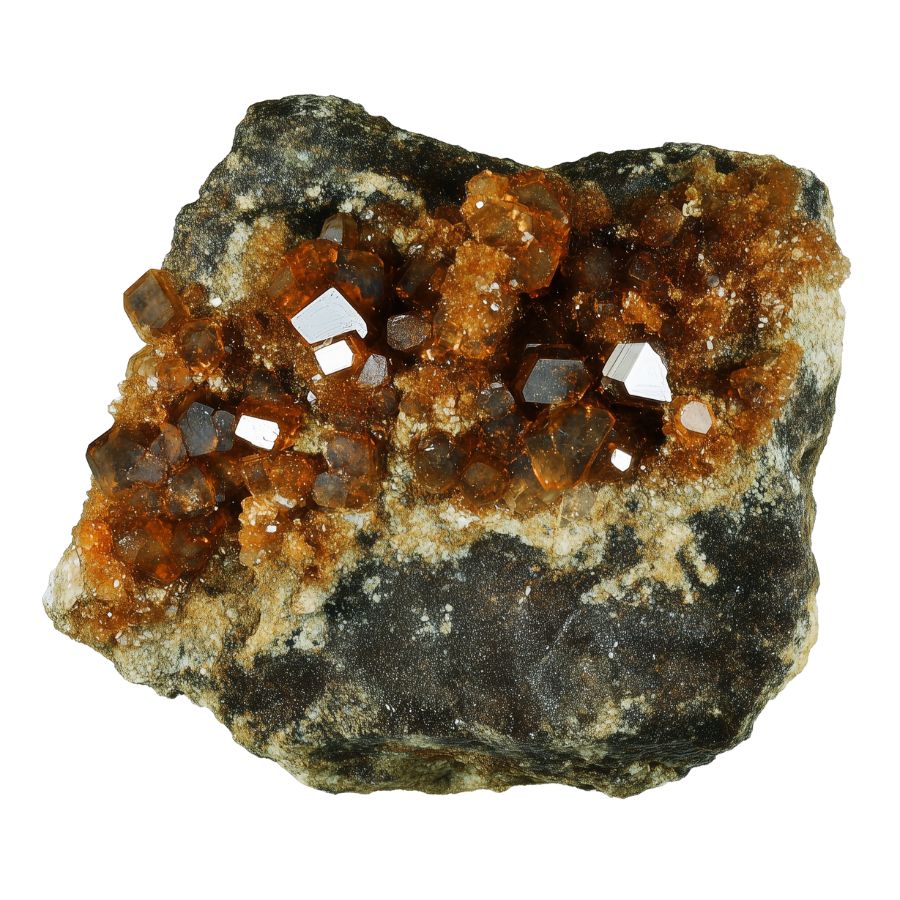
Grossular garnet comes in an amazing range of colors – from green and yellow to pink, orange, and even colorless. The most striking feature is the presence of internal swirls and streaks that create unique patterns within each stone.
The stone’s surface has exceptional brilliance that rivals expensive gems like emeralds. Light bounces through it beautifully, creating bright flashes and sparkles.
A special variety called Mint Garnet glows under ultraviolet light, creating an otherworldly effect. This unusual property makes it particularly interesting to collectors. The stone’s clarity is typically excellent, with few visible impurities.
The presence of trace elements like chromium and vanadium creates its varied colors. These elements mix in different amounts, resulting in subtle color variations that make each stone unique.
Some pieces show color zoning, where different shades blend together in distinct patterns.
Uvarovite Garnet
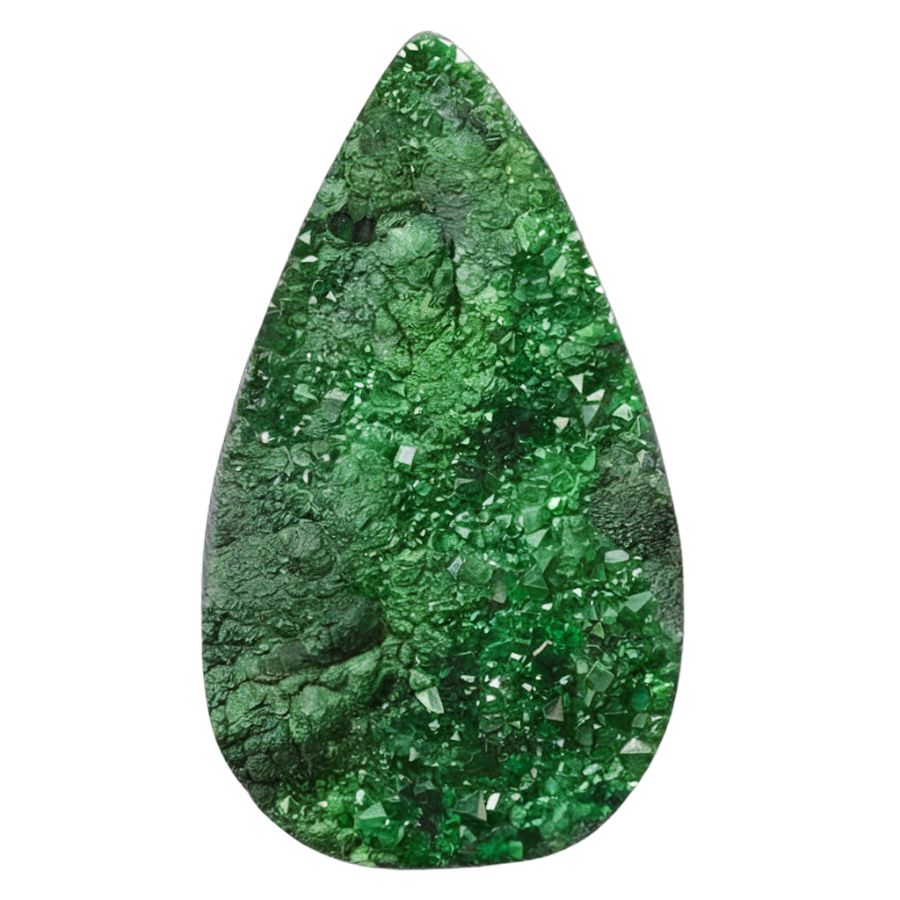
Uvarovite garnet displays a striking emerald-green color that remains consistent in all specimens. Unlike other garnets, where green hues may arise from chromium impurities, uvarovite’s green is inherent to its composition.
Instead of forming large crystals, uvarovite typically grows in clusters of tiny crystals. These clusters, called druzy, create sparkling surfaces that look like green sugar coating the rock beneath.
Under ultraviolet light, it shows an unexpected red glow, adding another layer of interest for collectors. This fluorescence is a unique feature not commonly found in other garnets.
These stones rarely grow large enough for traditional gem cutting. However, their natural crystal formations are so beautiful that they’re often left in their original state. The tiny crystals catch light from multiple angles, creating a dazzling display.
Rhodolite Garnet
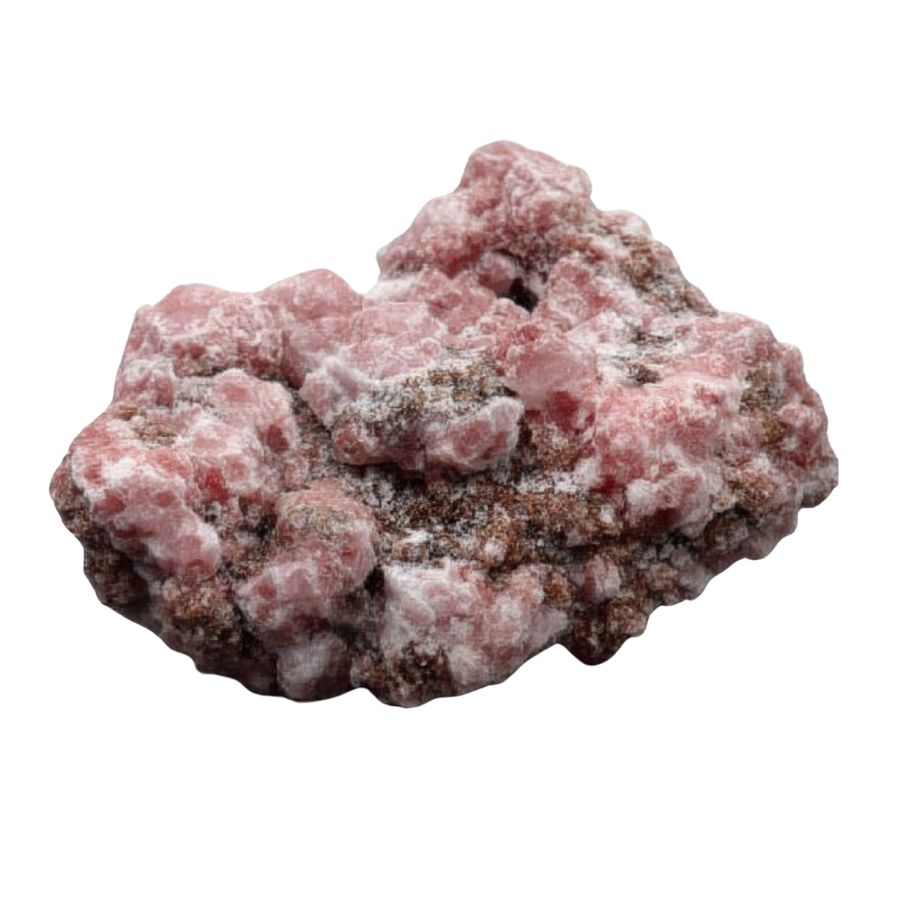
Rhodolite garnet stands out with its beautiful purple-red to raspberry-pink colors. The colors can shift between purple and red depending on the lighting, creating an interesting play of hues. This color range makes it distinctly different from the deeper reds of other garnets.
The stone’s clarity is typically excellent, with very few internal features visible to the naked eye. The surface has a glass-like shine that enhances its natural beauty.
What makes rhodolite special is its mixed composition of two different garnet types. This mixture creates its unique color range and optical properties. The stone often shows stronger color saturation in its center, fading slightly toward the edges.
Rhodolite garnet is particularly valued for its vibrant colors that can mimic more expensive gemstones like rubies and amethysts, making it a popular choice among collectors and jewelers alike.
Hessonite Garnet
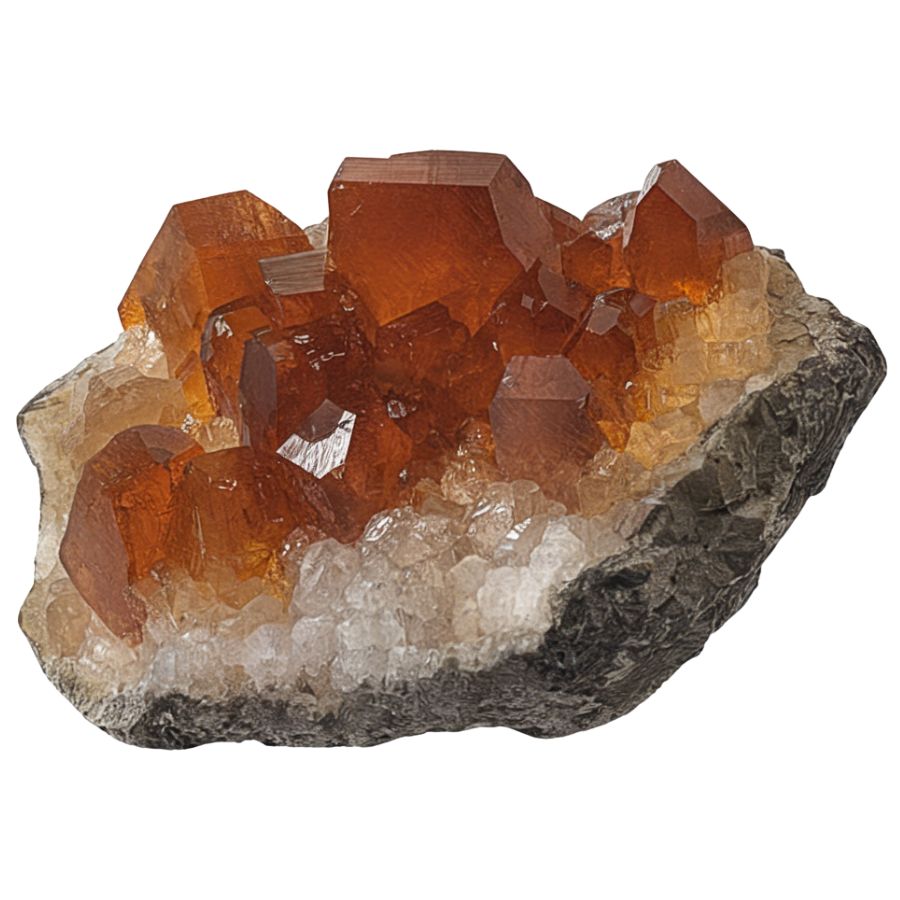
Hessonite garnet showcases warm honey-to-cinnamon colors, ranging from golden yellow to deep reddish-brown. Some pieces display hints of purple, creating complex and appealing color combinations.
Inside the stone, you might find interesting patterns created by tiny needle-like crystals. Unlike many gems where inclusions reduce the value, these internal features are appreciated in Hessonite. They create unique patterns that make each stone one-of-a-kind.
The stone’s transparency varies from crystal clear to slightly cloudy. This variation can create interesting effects, especially when light passes through the stone. Some pieces show a subtle glow that seems to come from within.
High-quality hessonite stones are relatively uncommon, especially in larger sizes. Their warm colors and unique internal features make them particularly interesting to collectors.
Tsavorite Garnet
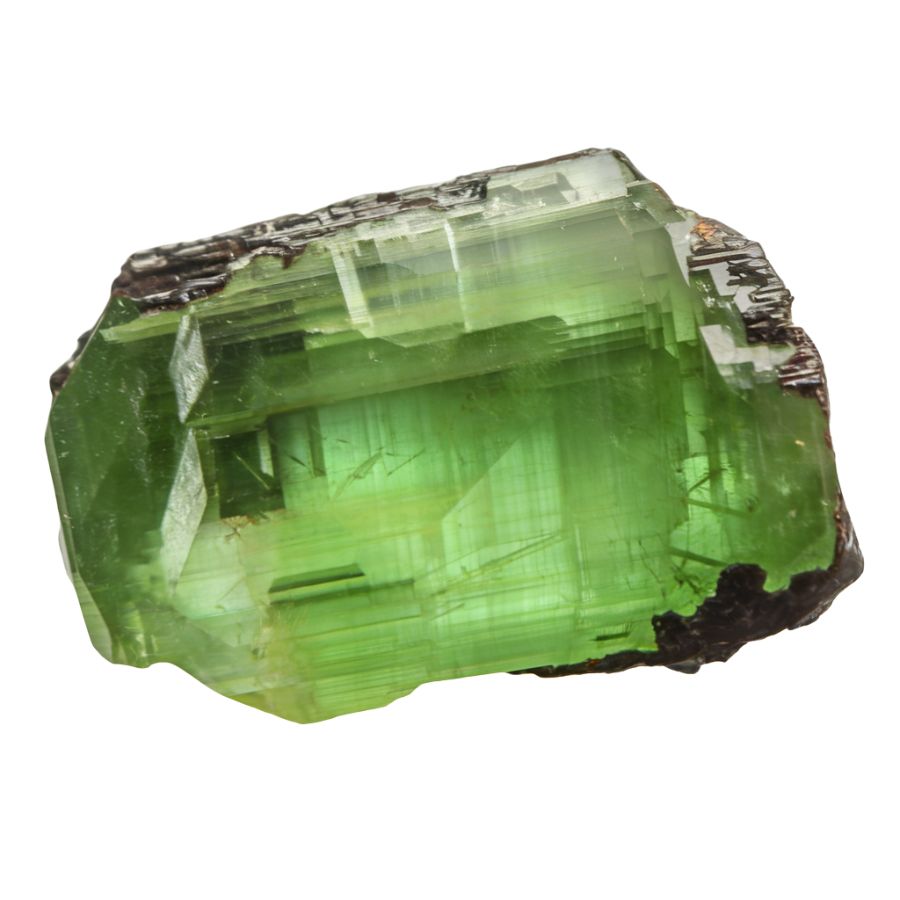
Tsavorite garnet displays a brilliant green color that ranges from bright lime to deep forest green. This stunning color comes from tiny amounts of chromium and vanadium in the stone.
The green is so pure and vibrant that it often matches or surpasses the color of fine emeralds. The surface has a glass-like shine that makes the stone look alive with movement.
Each tsavorite has its own personality in terms of color depth and brightness. Some stones show subtle color changes under different lighting, while others maintain a consistent deep green.
Star Garnet
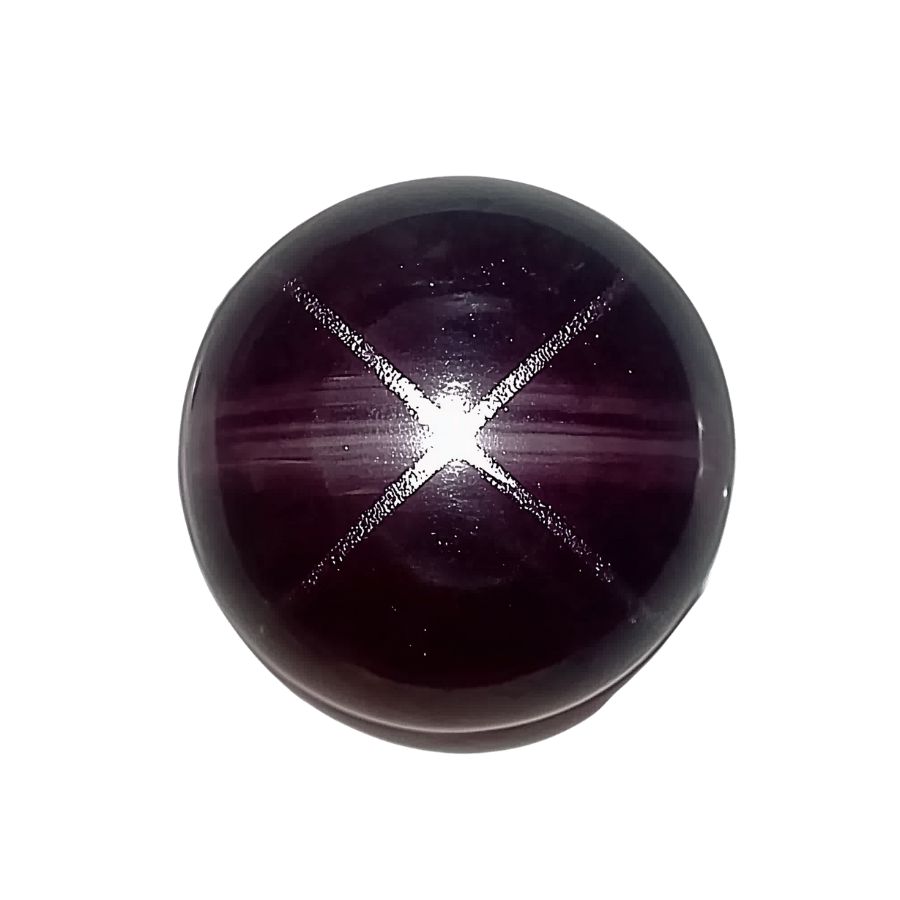
Star garnet shows a fascinating light pattern that looks like a star floating on its surface. This effect, called asterism, comes from tiny needle-like crystals inside the stone. The star usually has four or six rays that move as you turn the stone under light.
The stone’s color is typically deep red to purple-red, often with brown undertones. When polished into a smooth, rounded shape, the star effect becomes more prominent.
The best specimens show sharp, well-defined star rays against a rich, even background color. These stones are quite special because not all garnets can form stars.
The right conditions during formation must exist for the star effect to develop. The tiny crystals inside must align perfectly to create the star pattern. The star effect is natural and permanent – it won’t fade or change over time.
What Rough Garnets Look Like?
Garnets display unique identifying traits when found in their raw, natural state. Look for these distinguishing features:
Look for Distinctive Angular Shapes
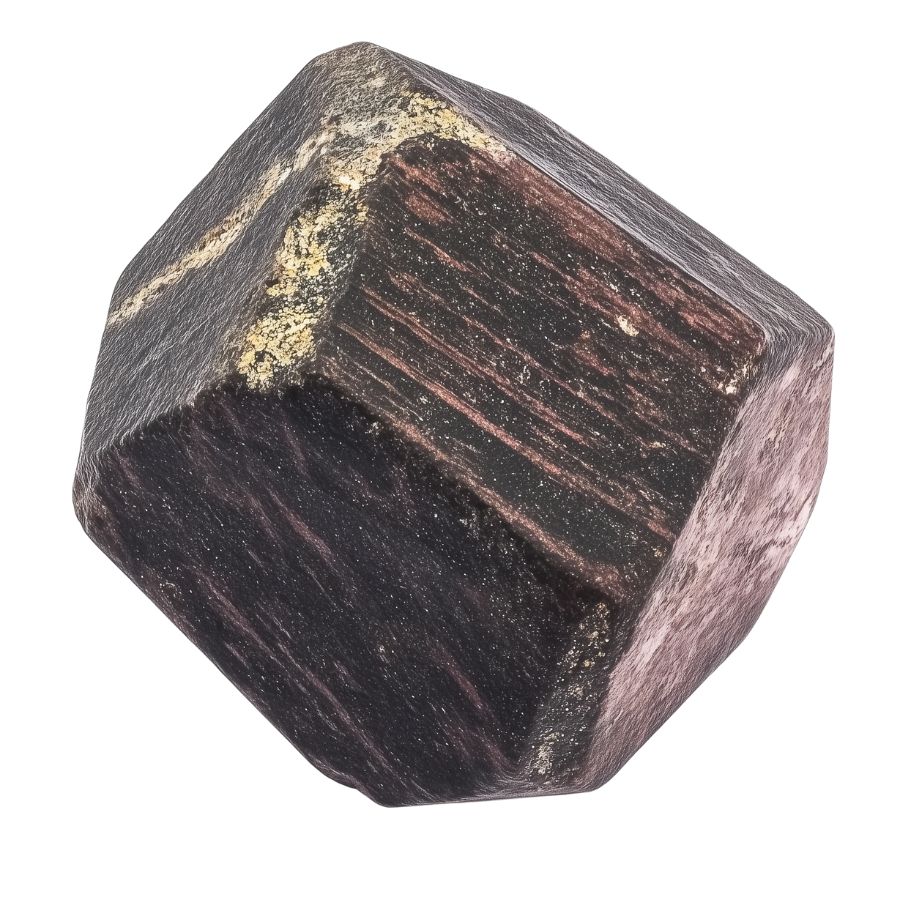
Raw garnet typically forms in dodecahedral or trapezoidal crystal shapes. Think of it like tiny, naturally-formed geometric shapes.
Unlike smooth river rocks, rough garnets have sharp edges and flat faces. Even when broken, they tend to maintain these angular patterns. You’ll often spot them as chunky, block-like crystals that look like they’ve been roughly carved.
Check the Color Range and Transparency

Garnets aren’t just red! Look for deep wine colors, but also keep an eye out for orange-brown, green, or even black varieties.
Hold it up to light – rough garnets often show some translucency at the edges, even if the center seems opaque.
Examine the Surface Texture
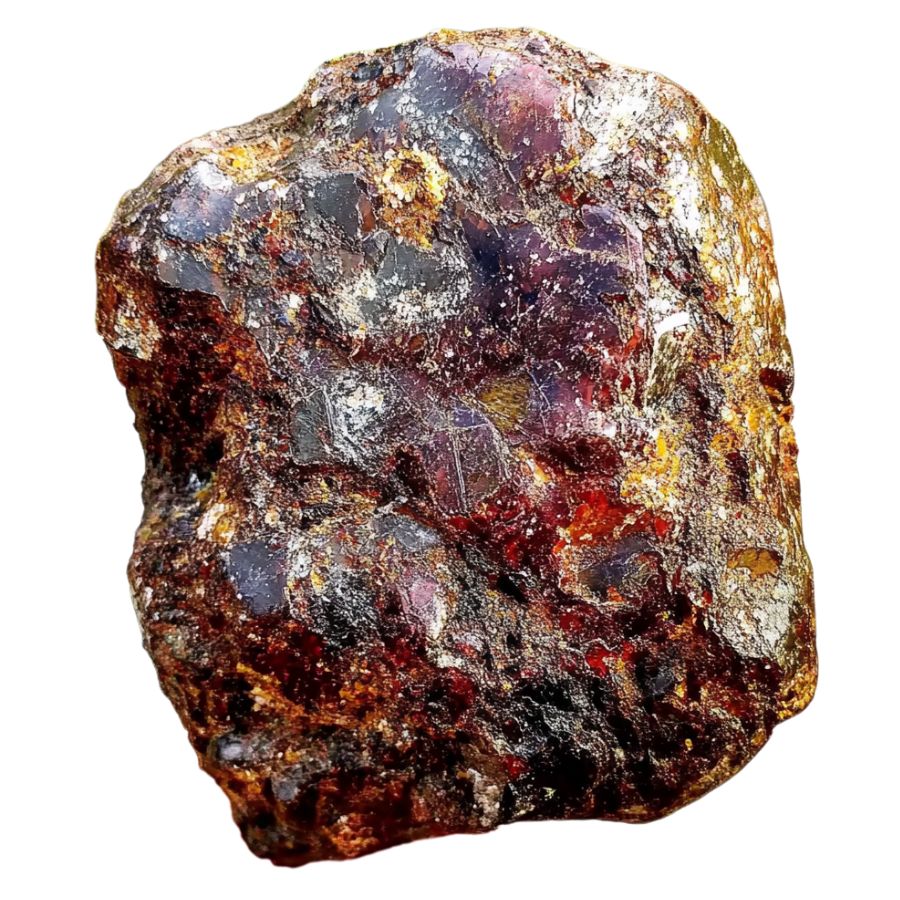
Raw garnets have this unique, almost greasy-looking surface luster. Not shiny like glass, but more like wet plastic.
Run your finger over it – you should feel a smooth yet slightly waxy texture. If it’s been weathered, the surface might be slightly pitted or rough, but you’ll still see that characteristic luster in protected areas.
Test the Hardness and Toughness
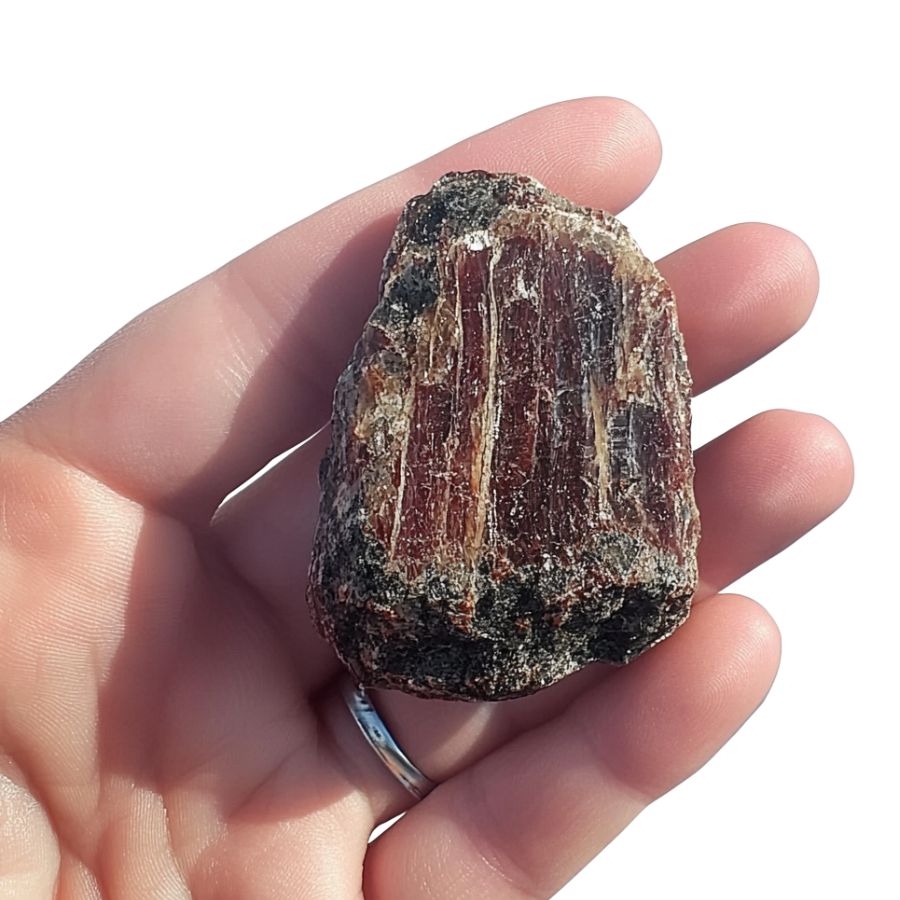
Here’s a quick field test: garnets can easily scratch a penny but won’t scratch quartz. They’re surprisingly heavy for their size – noticeably heavier than a similar-sized piece of quartz or feldspar. Don’t be fooled by lighter stones that look similar!
A Quick Request About Collecting
Always Confirm Access and Collection Rules!
Before heading out to any of the locations on our list you need to confirm access requirements and collection rules for both public and private locations directly with the location. We haven’t personally verified every location and the access requirements and collection rules often change without notice.
Many of the locations we mention will not allow collecting but are still great places for those who love to find beautiful rocks and minerals in the wild without keeping them. We also can’t guarantee you will find anything in these locations since they are constantly changing.
Always get updated information directly from the source ahead of time to ensure responsible rockhounding. If you want even more current options it’s always a good idea to contact local rock and mineral clubs and groups
Tips on Where to Look
To increase your chances of finding garnets, focus your search on these favorable areas:
Metamorphic Rock Outcrops

Look for dark-colored metamorphic rocks, especially schist and gneiss. These rocks often have visible layers or bands.
Garnets appear as dark red or brownish-red crystals embedded in the rock. Common near hiking trails and road cuts where metamorphic rocks are exposed.
Stream Beds & Gravel Banks
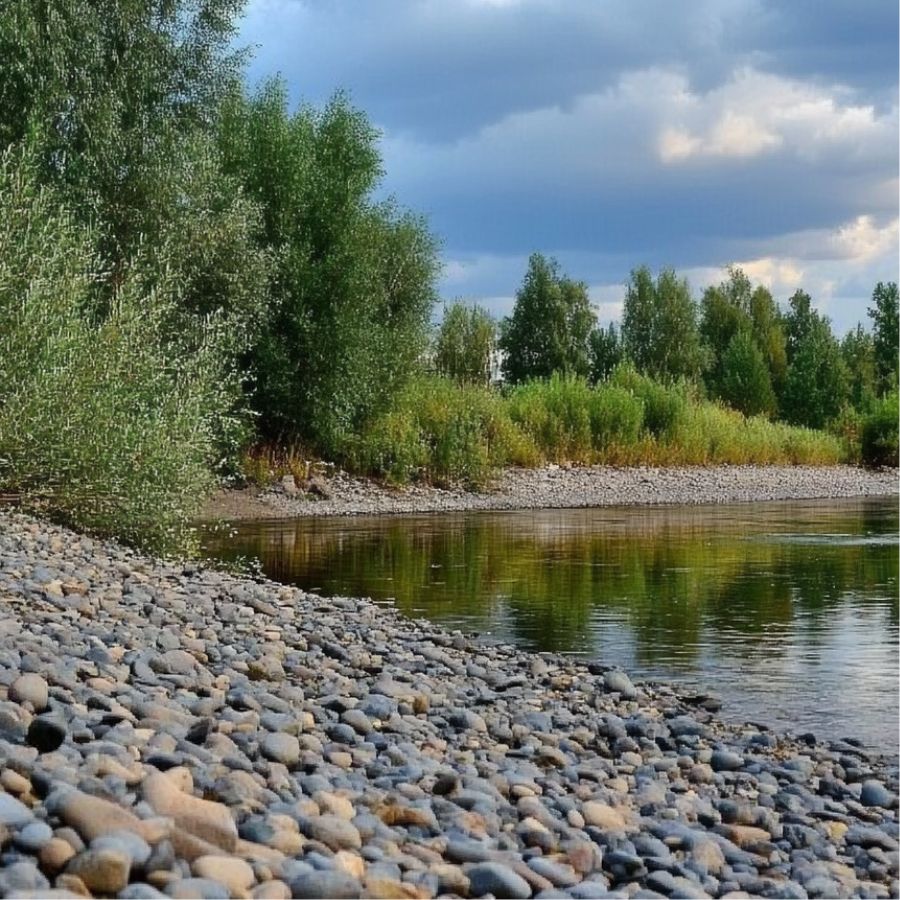
Check gravel deposits in streams, especially after heavy rains. Garnets are heavier than most minerals, so they concentrate in stream bends where water slows down.
Use a pan or sieve to sort through the gravel, keeping an eye out for the distinctive reddish crystals that glimmer when wet.
Pegmatite Areas
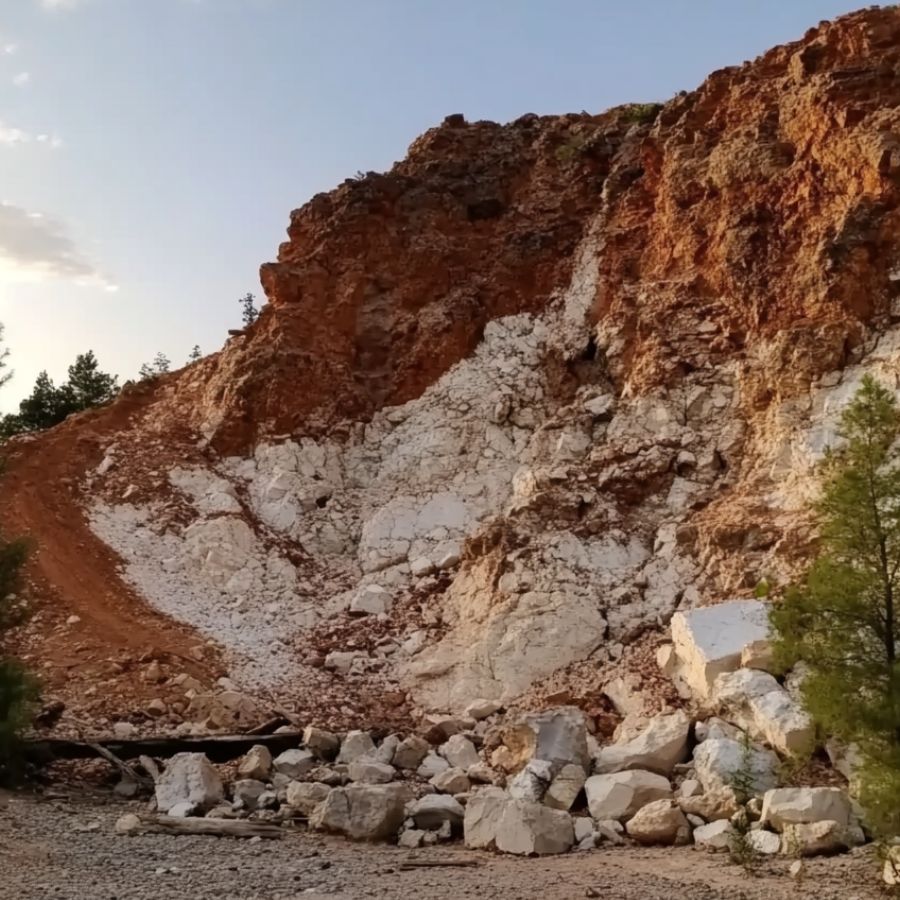
Search around pegmatite formations, which are coarse-grained igneous rocks that sometimes form large crystal pockets where beautiful garnet specimens can be found nestled among other minerals like mica and feldspar.
These areas often have scattered surface rocks and exposed cliff faces that weather over time, releasing garnet crystals.
Old Mining Areas
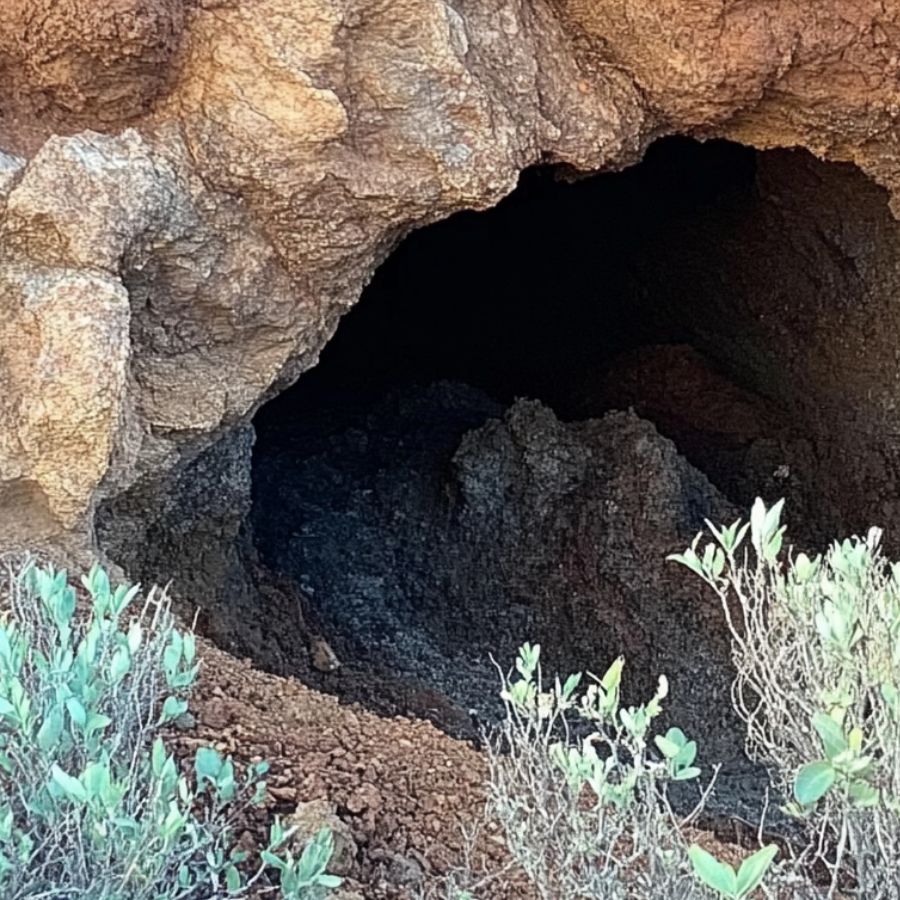
Explore permitted public mining dumps and tailings piles near historical mica or feldspar mines, where garnet was often discarded as a byproduct during past mining operations and can still be found in abundance among the leftover material.
Some Great Places To Start
Here are some of the better places in the state to start looking for garnet:
Always Confirm Access and Collection Rules!
Before heading out to any of the locations on our list you need to confirm access requirements and collection rules for both public and private locations directly with the location. We haven’t personally verified every location and the access requirements and collection rules often change without notice.
Many of the locations we mention will not allow collecting but are still great places for those who love to find beautiful rocks and minerals in the wild without keeping them. We also can’t guarantee you will find anything in these locations since they are constantly changing.
Always get updated information directly from the source ahead of time to ensure responsible rockhounding. If you want even more current options it’s always a good idea to contact local rock and mineral clubs and groups
Wrangell

Wrangell is a historic town on Wrangell Island in the southeast part of the state. The area has been ruled by four different nations over time: the Tlingit, Russia, Great Britain, and the United States. Visitors can see this rich history in places like the Chief Shakes Tribal House and ancient beach carvings.
For garnet hunters, the famous Garnet Ledge is about seven miles north of Wrangell near where the Stikine River meets the sea. This special spot has garnets embedded in hard schist rock.
You can only reach the Garnet Ledge by boat since there are no roads to it. Many locals call this area “garnets in the matrix” because the red crystals are set in the gray-green schist like jewels. Nearby, the Garnet Ledge Cabin offers a place to stay for those wanting to spend more time searching for these beautiful red stones.
Hatcher Pass

Hatcher Pass is a mountain pass in the Talkeetna Mountains. The area is famous for its beautiful alpine scenery and old gold mines. Many visitors explore Independence Mine State Historical Park to learn about the gold rush days when miners worked these mountains.
The rocks in Hatcher Pass tell a story of great change. Heat and pressure transformed ordinary rocks into metamorphic schists and gneisses. These conditions were perfect for creating garnets. As hot water moved through cracks in the rocks, it deposited various minerals, including garnets.
Rockhounds looking for garnets should check the slopes around Independence Mine. Here, garnets can be found in the metamorphic schist rocks. The drainage areas along Willow Creek are also good spots to search. After spring melts or heavy rains, water washes away dirt and can expose new specimens.
The garnets in this area are usually dark red to purple and might be found alongside other minerals like quartz and tourmaline.
Red Mountain

Red Mountain stands about 13 kilometers southeast of Seldovia on the Kenai Peninsula. The mountain’s distinctive reddish color comes from its unusual rock composition, making it easy to spot from a distance. Local hikers often use it as a landmark when exploring the area.
This mountain is geologically special because it contains ultramafic rocks, rare rocks that originally came from deep within the Earth’s mantle. Scientists study Red Mountain to learn about processes happening far below our planet’s surface.
Garnets at Red Mountain are found in lens-shaped bodies of garnet-clinopyroxenite along the north edge of the mountain. Unlike garnets in other locations, these are primarily pyrope, grossular, and almandine varieties.
Rock collectors appreciate Red Mountain not just for garnets but also for chromite, which appears in banded layers within the rocks. The challenging terrain makes collecting here an adventure for serious rockhounds with proper equipment and preparation.
Chena River

The Chena River flows for 100 miles through interior Alaska near Fairbanks. Beginning in the White Mountains, it winds westward until it joins the Tanana River. The river supports a rich ecosystem of plants and animals in its forests and wetlands.
Garnets can be found in several places along the Chena River system. The rocks in this area underwent metamorphism, a process where heat and pressure change one type of rock into another. This process created perfect conditions for garnet formation.
Good spots to look for garnets include areas where small streams feed into the main river, especially where they cut through schist rock formations. After spring floods, check freshly exposed gravel bars for these red gems. Sometimes garnets wash down from higher elevations and collect in river sediments.
Local rockhounds have had success finding garnets embedded in schist rocks along certain stretches of the river. The garnets here tend to be smaller but can have excellent color and clarity.
Chugach Mountains
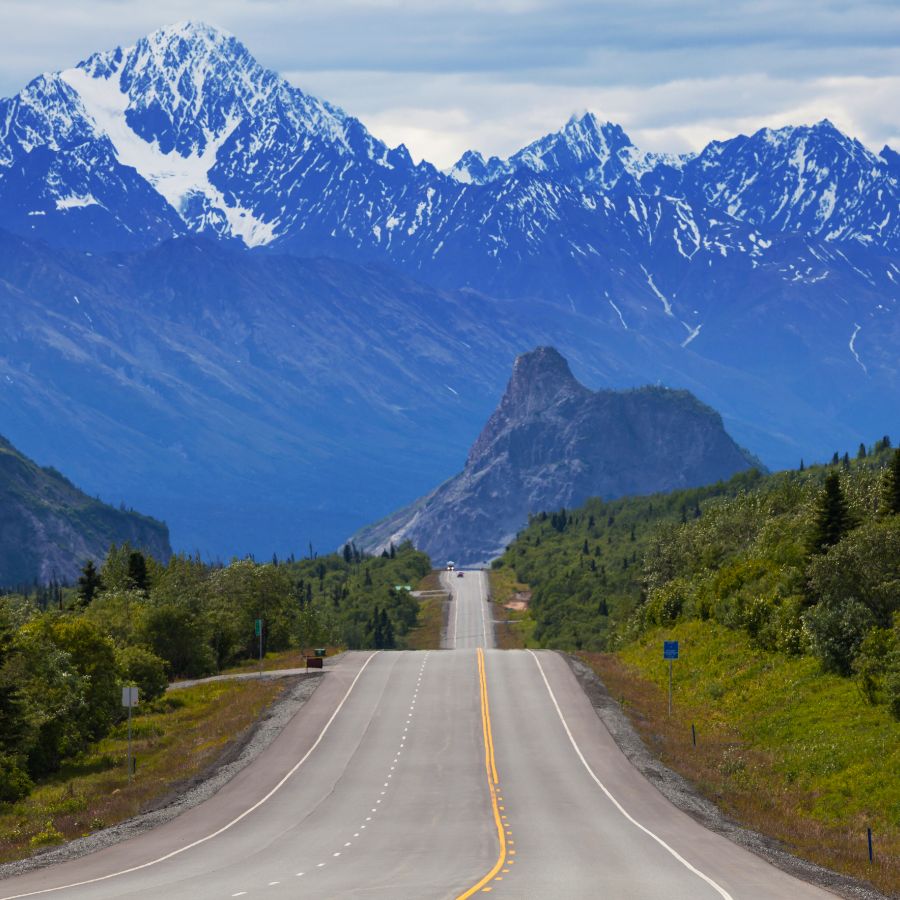
The Chugach Mountains form a 250-mile arc in the southcentral part, stretching from the Kenai Peninsula to the Copper River. These mountains reach heights over 13,000 feet and contain massive icefields and rugged peaks. Most of the range lies within protected areas like Chugach State Park and Chugach National Forest.
Geologically, the Chugach range sits at the meeting point of two different rock formations: the Peninsular terrane and the Chugach terrane. This complex geology created ideal conditions for various minerals to form, including garnets.
Wolverine Creek near Wolverine Glacier offers good opportunities for finding garnets. The challenging hike rewards searchers with chances to find these red crystals. Another promising location is around Eklutna Lake in Chugach State Park, where metamorphic rocks exposed on ridges may contain garnets.
Portage Valley near Portage Glacier also has metamorphic rock outcrops along its slopes where garnets might be found. The Byron Glacier Trail takes hikers to areas where they can examine the schist rocks that sometimes contain these prized red gems.
Places Garnet has been found by County
After discussing our top picks, we wanted to discuss the other places on our list. Below is a list of the additional locations along with a breakdown of each place by county.
| County | Location |
| Matanuska-Susitna | Petersville Recreational Mining Area |
| Anchorage | Girdwood |
| Matanuska-Susitna | Matanuska Glacier Area |
| Kenai Peninsula | Palmer Creek |
| Kenai Peninsula | Hope-Sunrise Mining District |
| Southeast Fairbanks | Tok Area |
| Southeast Fairbanks | Northway Area |
| Fairbanks North Star | Chena River State Recreation Area |
| Yukon-Koyukuk | Birch Creek |
| Yukon-Koyukuk | Circle Mining District |
| Yukon-Koyukuk | Livengood Area |
| Yukon-Koyukuk | Manley Hot Springs Area |
| Southeast Fairbanks | Eagle Area |
| Southeast Fairbanks | Fortymile River Area |
| Nome | Nome Beach |
| Northwest Arctic | Candle Creek |
| Northwest Arctic | Kobuk River |
| Nome | Brooks Mountain |
| Nome | Lost River |
| Nome | Cassiterite Creek |
| Nome | Tin Creek |
| Nome | Crystal Creek |
| Nome | Anderson Creek |
| Nome | York Mountains |
| Northwest Arctic | Noatak River Area |
| Northwest Arctic | Ambler River Area |
| Northwest Arctic | Shungnak Area |
| Northwest Arctic | Selawik River Area |
| Yukon-Koyukuk | Bettles Area |
| North Slope | Anaktuvuk Pass Area |
| North Slope | Colville River Area |
| North Slope | Umiat Area |
| Kodiak Island | Uyak Bay |
| Lake and Peninsula | Lake Iliamna Area |
| Lake and Peninsula | Pebble Mine Area |
| Lake and Peninsula | Kujulik Bay |
| Dillingham | Mulchatna River Area |
| Dillingham | Wood River Area |
| Dillingham | Togiak River Area |
| Dillingham | Nushagak River Area |
| Aleutians East | Aleutian Islands |
| Aleutians West | Unalaska Island |
| Ketchikan Gateway | Ketchikan Mining District |
| Petersburg | Petersburg Mining District |
| Prince of Wales–Hyder | Tongass National Forest |
| Wrangell | Eastern Passage |
| Wrangell | Green Point |
| Wrangell | Telegraph Creek |
| Wrangell | Point Rothsay |
| Wrangell | Sergief Island |

